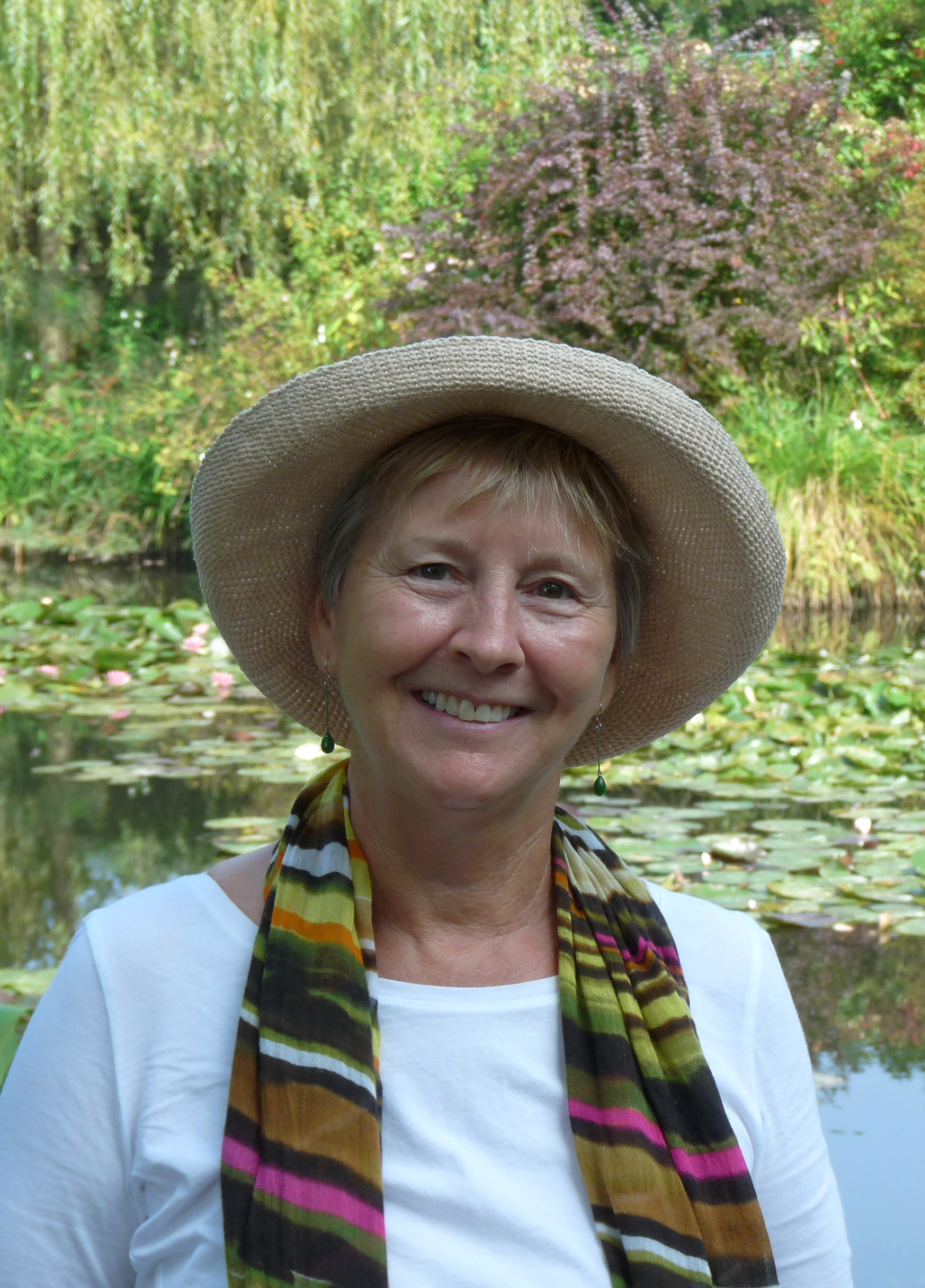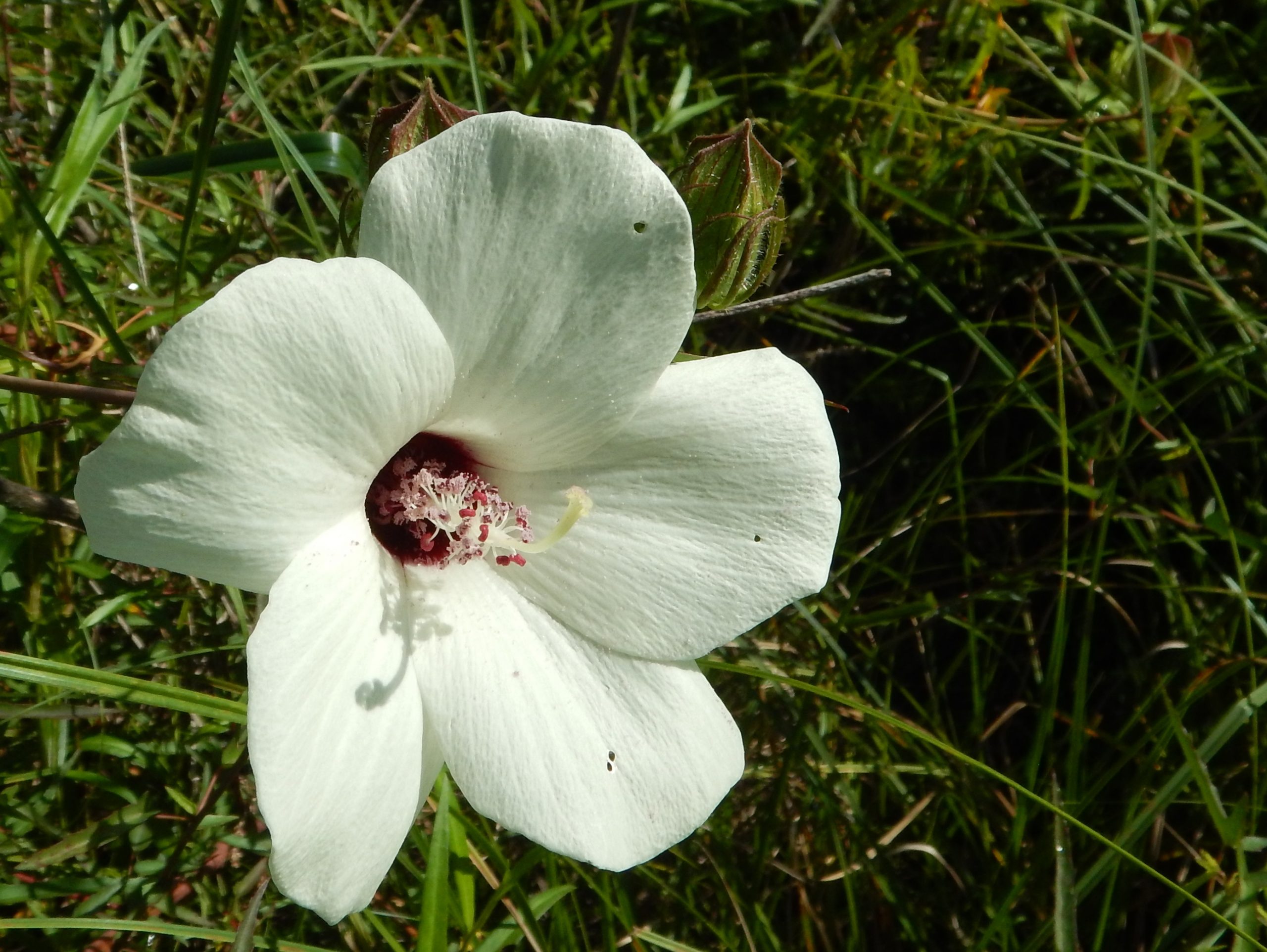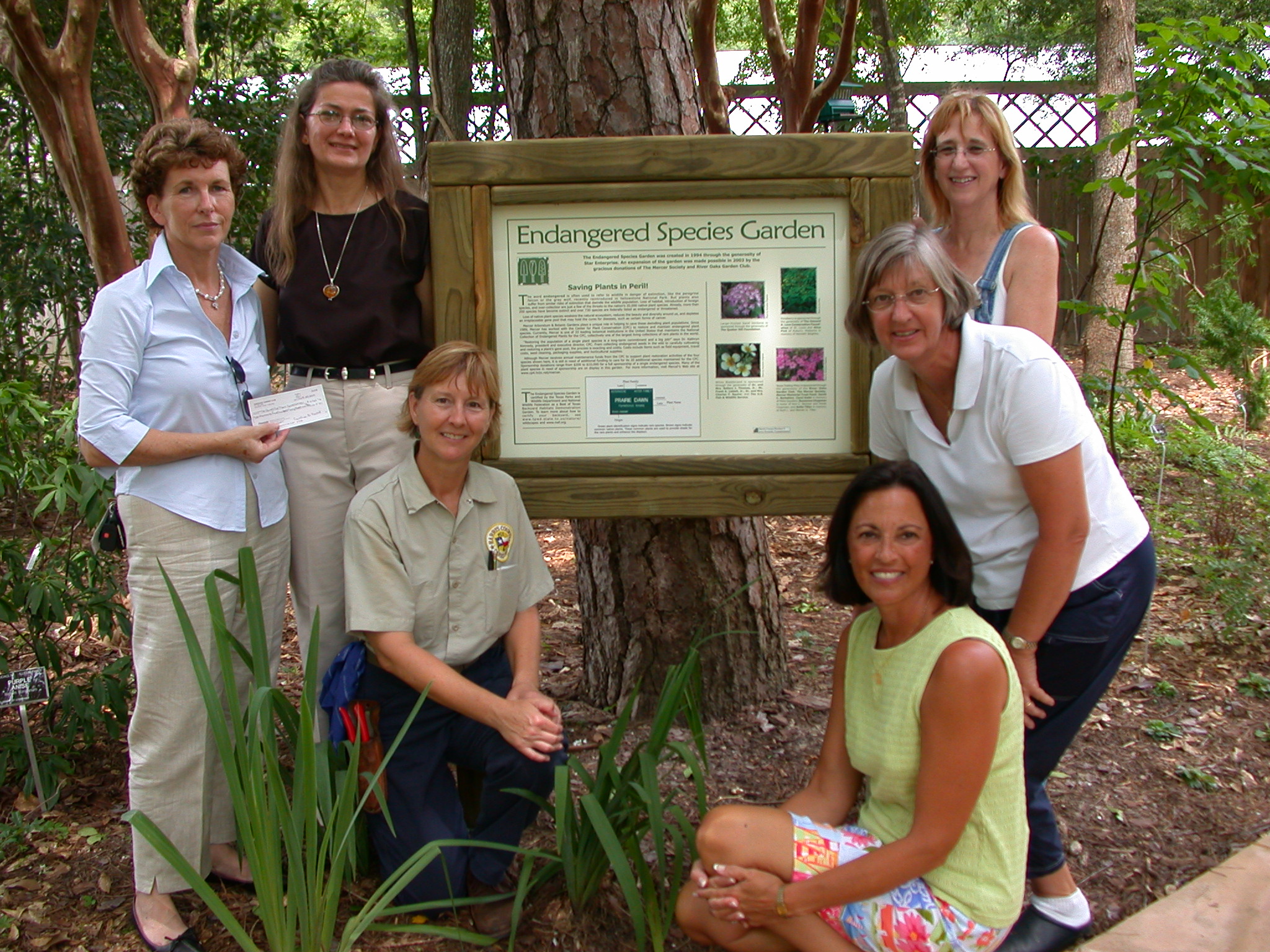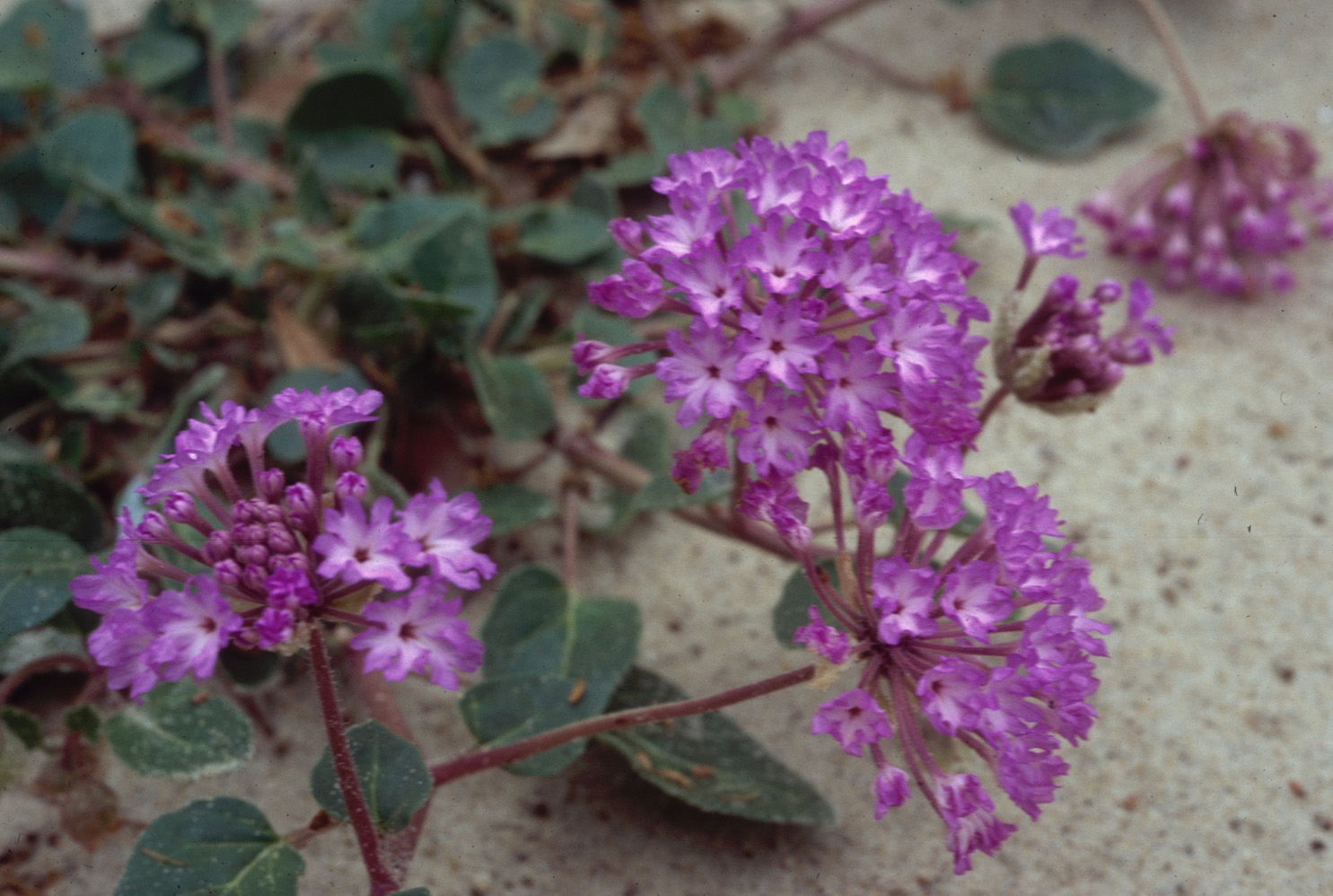Suzzanne Chapman
Our Conservation Champion, Suzzanne Chapman spent many of her working years dedicated to saving plants. Working at Mercer Botanic Gardens, she had many opportunities to be a hero for rare plants facing threat from climate change. Her great love of nature and of plants continues in her retirement, where she continues to share the message that we (humans) are an integral part of nature.
Congratulations on your recent retirement! What are you looking forward to in this new life chapter?
I’ve just moved to a ‘new’ home and am busy working on it. Now that cooler temperatures are with us in Houston, I’ve been moving potted plants and dividing plants from the old garden to install in my new garden. I now have more space, so I’m thrilled to remove lawn, add garden beds, and amend the soil with some wonderful local compost when I plant more native pollinator plants. This summer, as a volunteer, I met up with Anita Tiller and the Mercer Botanical Center (MBC) interns to forage for seed of Asclepias viridis in a local park near me. I just recorded my new garden as part of the Homegrown National Park, a scheme designed by professor/author Doug Tallamy to show how much home gardens can contribute to the collective green space to support plants and wildlife biodiversity.
When did you first fall in love with plants?
Growing up in England, it is innate to feel connected to the outdoors and nature. We lived in a small town with plenty of green space, woods with bluebells and primroses in springtime, and trees to climb. Some of the words I remember using as a child are Syringa and Rhododendron, the botanical names for Lilac and Azalea. My Nana encouraged me to play in the garden and pick her tulips.
What was your career path to Mercer Botanic Gardens?
I came from an accounting position, then was laid off in one of the ‘leveraged buyouts’ that occurred during the 1980’s. I looked at my options and knew I wanted something more personally fulfilling—and I loved gardening. I started to volunteer at Mercer in the greenhouses on Saturdays, while attending Houston Community College part-time for an AS in Horticulture and working full-time at two jobs. I was hired part-time by John Fairey at Peckerwood Garden—now The John Fairey Garden in honor of its founder—to assist with propagation (primarily of conifers) and the garden’s seed distribution program. I was still volunteering at Mercer, which was much closer to home, and I took a full-time position as gardener there in 1994. In my 27 years at Mercer, I was greenhouse manager, horticulturist, and volunteer coordinator. When I retired, I enjoyed the position of botanical collections curator. Surprisingly, my accounting background was very useful, as timing and numbers are critical for greenhouse operations with propagation of plants by seed.
In your experience, what are some of the pressing conservation needs related to Texas’ rare and native plants?
Communication and education of the public is one pressing need, since most Texas land is privately owned. Education of developers is another, since the population continues to expand dramatically in the Houston area. We are in a sub-tropical floodplain, and many of the trees and natural areas we enjoy are still being cleared and paved over. It drives me crazy that new commercial spaces get surrounded by rows of Ligustrum shrubs when we have native plant options.
Remove the word weed from so many common names of wild native plants! We need more engaging terms to encourage folks to try growing natives in their home gardens as ornamentals.

How did the effects of climate change impact your work at Mercer Botanical Gardens? What successes and challenges did you encounter?
With Mercer being adjacent to Cypress Creek, our challenges were definitely the floods. The winter of February 2021 was a shock to the system, but remarkably most plants came through strong! The extremes are always an issue. The successes are that we have become very well-prepared and resilient to the floods.
Better weather reporting contributes to MBC’s planning. We have a whole building generator to protect the rare refrigerated/frozen stored seed bank. The MBC herbarium is housed on the second floor for safety, and the building is being secured with hurricane shutters.
Mercer recently was awarded grants to move the vulnerable conservation nursery from its current remote greenhouse location to the ‘backyard’ of the MBC, where plants will be easily accessible and above flooding potential. During the 2017 Hurricane Harvey, flood waters floated plants and nursery tables over the existing nursery area—despite its surrounding 10’ fence! Most plants floated and settled to the ground when the water receded, and others were retrieved from the tree line further away. Luckily, we did not lose a single plant.

What conservation project/initiative are your particularly proud of from your time at Mercer Botanic Gardens?
The R.A. Vines SBSC Herbarium was a great project. Three staff with 20+ volunteers and interns moved a collection of ~50,000 herbarium specimens to the MBC. We boxed, froze, unboxed, filed, and refiled as names or families changed. In just over two years, we completed a basic digitized inventory of the collection for the first time. Hurricane Harvey made the project even more memorable. We had to move our work upstairs from a gutted ground floor until repairs could be made.
The staff, volunteers and interns have accomplished some amazing work during my time at Mercer and continue to do so. One of the latest projects has been working with BRIT and the Global Genome Initiative for Gardens, collecting living tissue and storing herbarium specimens at Mercer. Another is Mercer’s involvement with the Global Conservation Consortium for Oak. Personally, I am thrilled to have known some folks for 25+ years as volunteers who are great friends outside of work. The more folks we touch through gardening and nature, the word gets out to protect plants and biodiversity everywhere.
In the early 2000’s, Anita Tiller brought the Millennium Seed Bank (MSB) project to Mercer through Michael Eason from the Ladybird Johnson Wildflower Center. Michael Eason is the author of ‘Wildflowers of Texas’ and conservation botanist for Texas Flora – Facebook, and San Antonio Botanic Garden. At that time, as a volunteer, I and others accompanied Michael to East Texas for many seed collecting forays. Staff from Kew also joined us, and this gave me a perfect opportunity to reconnect with Janet Terry while on vacation visiting family in England. We were given a behind the scenes (or should I say underground) tour of the MSB at Wakehurst Place/Kew, a real treat!
What advice do you have for newcomers to the field of plant conservation?
I am excited by the enthusiastic young folks entering the field of plant conservation. Mercer has had some amazing interns. During the COVID pandemic in 2020, one intern working from home designed signage and prepared a guide to grasses for the HCP4 Prairie Dawn Preserve. It’s very rewarding to work with like-minded folks, co-workers, volunteers, interns and friends. I love to to see that spark in someone new to plants, gardening and conservation.
Connect with everyone you can! Even with COVID, we attended fabulous online meetings to keep up to date on projects and meet new folks. One of the rewards from last year was to see more folks with their kids getting back outside and learning to garden!
What has it meant to you to be a member of the CPC network? How has CPC supported your work?
It’s exciting to be part of a network of people working in the same field and see their successes. CPC provides opportunities to share best practices and techniques for working with rare plant propagation. Real-time information is increasingly available to everyone online, and we enjoy more collaboration among groups. Thanks to the involvement and encouragement of CPC conservation work in addition to other programs at the MBC, our needs have grown from one staff botanist to a full-time staff of four, with seasonal interns and over 20 volunteers.
What advice would you give to the public who want to learn more about how they can help save imperiled plant species?
We need to feature how amazing plants are, and that they are crucial to all life on the planet. Plants provide the habitat that supports all the charismatic endangered wildlife. We are an integral part of nature, not just viewing it from the sidelines!
Get involved with local public gardens and look at their conservation programs. At Mercer, check out the Endangered Species Garden, and consult the conservation interpretive signage and educational booklets for details on protecting plants.
In your home gardens, save some space for the wild to sneak in. Keep native trees, ditch the lawn, save the leaves, learn the plants, plant for pollinators, feed the birds, and embrace the wilderness close at hand.
-

Neches River Rosemallow (Hibiscus dasycalyx) plant at east Texas preserve site, July 2017. Photo by Suzzanne Chapman courtesy of Mercer Botanic Gardens. -

Suzzanne Chapman at the dedication of support for the Endangered Species Garden by the Kingwood Garden Club, June 2004. Photo courtesy of Kingwood Garden Club -

Closeup of Large-fruit Sand-verbena (Abronia macrocarpa) at Mercer growing in sandy soil. Photo by Greg Wieland.